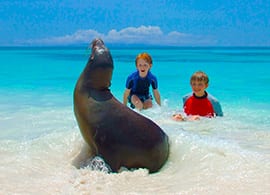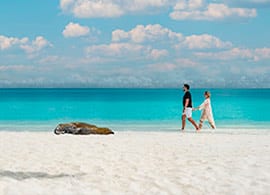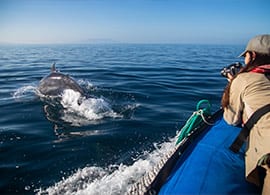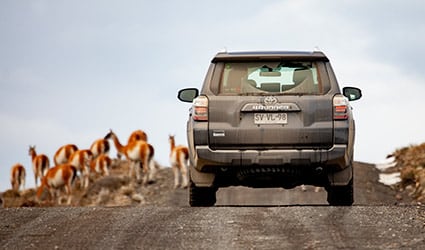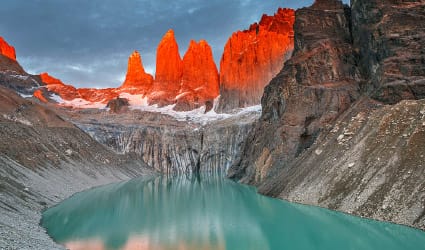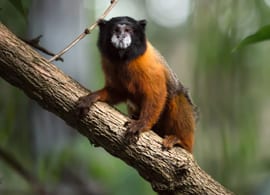- Home >
- Travel Guide >
- Galapagos Islands >
- Animals & Wildlife >
- Yellow Bellied Sea Snake
Yellow Bellied Sea Snake Facts
Name: Yellow Bellied Sea Snake
Family: Hydrophiidae
Scientific Name: Pelamis Platurus
Length: up to 80 cm (31.5 in)
Weight: N/A
Category: Reptiles
Number of Species: 28
Endemic Species: 19
Twenty eight species of reptiles have been recorded in Galapagos in recent times. Nineteen of these species are endemic to the archipelago, 11 of which are confined to single islands, and three species have been introduced.
Similar in structure to the terrestrial snakes, but the only species recorded in Galapagos, the Yellow-bellied (or Pelagic) Sea Snake, is entirely marine. It is characterized by its black and yellow pattern and flattened tail, an adaptation for swimming.
Identification:
This species is entirely marine. Black above and yellow below, with a flattened yellow tail with large black spots. It is migrant, but regularly recorded at sea in Galapagos, particularly during El Niño years. Yellow bellied sea snakes are highly venomous.
Behavior:
The yellow-bellied sea snake is a diurnal sea snake and primarily aquatic, living its entire life cycle at sea. It eats small surface-dwelling fish and eels and as an ambush predator, it sits and waits quietly at the surface for fish to swim by. To move in the water, the snake undulates its flattened tail and body from side to side. It is able to efficiently swim forwards and backwards at sea, but it cannot move well when it is washed on shore, which is where it is mainly seen during our Galapagos cruises. This snake can spend up to 3 hours underwater without surfacing and it is estimated that the snake spends over 80% of its life underwater, surfacing mostly when the waters are calm. It is not known to be aggressive, usually reluctant to strike, and often strikes without injecting venom. To remove barnacles, algae or other growths in its skin, the snake ties a knot in its body and runs it from one end of the body to the other, cleaning the skin in the process. This technique is also used when shedding skin. This snake probably breeds only in areas of water as warm as 68 degrees F (20 C) or warmer. Young are born in the ocean, or mangrove lagoons or rocky tidal areas near shore.
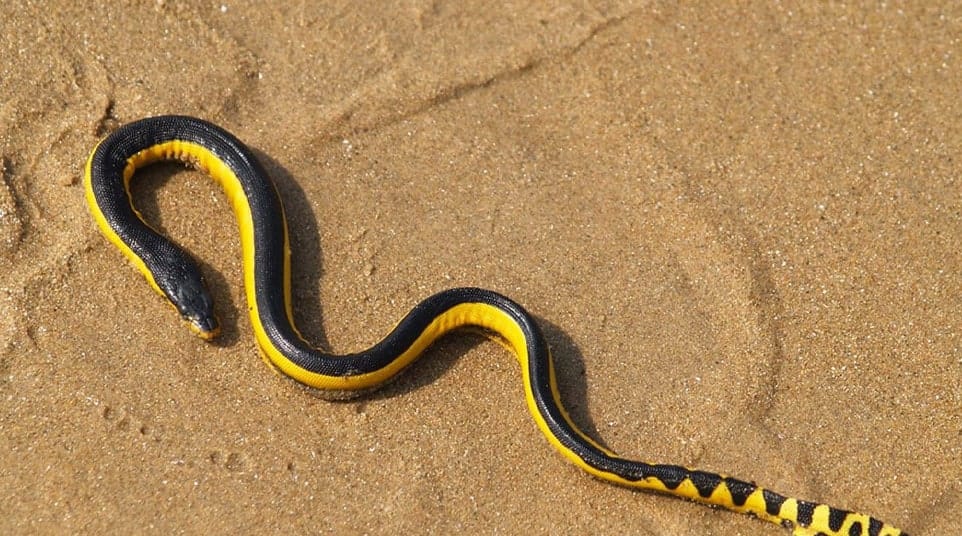
Credit: (c) Aloaiza / Wikipedia (CC BY 3.0)


